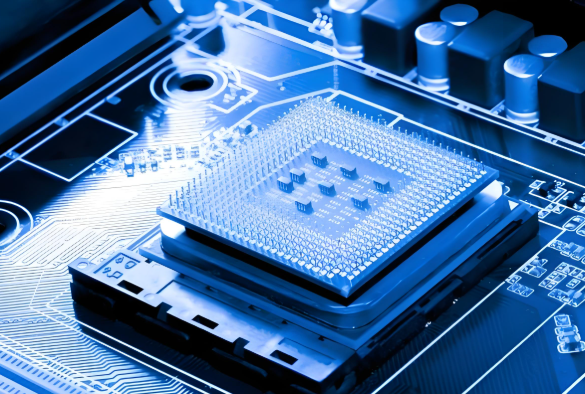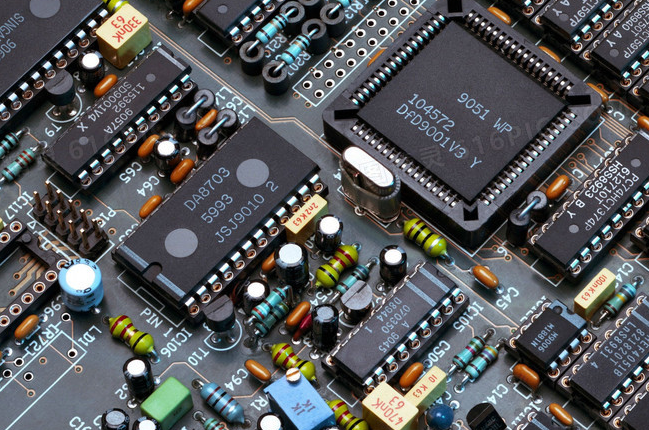The Ultimate Guide to Building an Electronic Components Library
Introduction
In the rapidly evolving world of electronics design and manufacturing, efficiency, accuracy, and speed are paramount. Whether you are a seasoned electrical engineer, a PCB designer, or a hobbyist working on a personal project, one of the most foundational elements of your workflow is your Electronic Components Library. This library is not merely a collection of datasheets and symbols; it is the very bedrock upon which successful, error-free, and timely projects are built. An organized and comprehensive library streamlines the entire design process, from schematic capture to PCB layout and ultimately to procurement and assembly. It acts as a single source of truth, ensuring consistency across teams and projects, drastically reducing the risk of errors that can lead to costly re-spins and production delays. In today’s fast-paced market, where time-to-market can define a product’s success, neglecting your component library is a luxury no individual or company can afford. This article delves deep into the critical importance of a robust Electronic Components Library, outlines the best practices for creating and maintaining one, explores the challenges involved, and highlights how modern solutions like ICGOODFIND are revolutionizing this essential aspect of electronics design.

The Critical Role of an Electronic Components Library
An Electronic Components Library is a centralized repository that contains all the necessary digital models and information for the components used in electronic design automation (EDA) software. Its significance cannot be overstated, as it directly impacts every subsequent stage of the product development lifecycle.
First and foremost, the library ensures design integrity and accuracy. Every component in a library consists of several parts: a schematic symbol (the visual representation on the circuit diagram), a PCB footprint (the physical pattern of copper pads and holes on the board), and a 3D model (for mechanical integration and visualization). When these elements are meticulously created and managed within a library, designers can be confident that the part they place on their schematic will correctly connect to its footprint on the board layout. Inconsistencies here—such as a pin numbering mismatch between the symbol and the footprint—are a primary cause of catastrophic board failures. A well-maintained library acts as a preventive measure against such costly errors.
Secondly, it dramatically enhances efficiency and accelerates time-to-market. Imagine starting every new design project from scratch: searching for datasheets, manually drawing symbols, calculating footprint dimensions, and creating 3D models. This process is not only incredibly time-consuming but also prone to human error. A centralized library allows engineers to simply search for a component, drag and drop the verified part into their design, and continue working. This reuse of validated components saves countless hours of tedious work, allowing engineering teams to focus on innovation and complex problem-solving rather than administrative tasks. The cumulative time saved across multiple projects translates directly into a faster product development cycle and a significant competitive advantage.
Furthermore, a comprehensive library facilitates better collaboration and standardization within an organization. In a multi-engineer environment, having a unified library ensures that everyone is using the same components with the same models. This standardization prevents confusion, reduces procurement complexity by limiting the number of unique parts used, and simplifies the assembly process. It also makes onboarding new team members much smoother, as they have immediate access to all approved components without needing to create their own.
Building and Maintaining Your Component Library: Best Practices
Creating a useful Electronic Components Library is not a one-time task; it is an ongoing process that requires strategy, discipline, and the right tools. Here are some best practices to consider:
1. Establish a Clear Management Strategy: Before creating a single component, define the rules. Decide on naming conventions for your symbols and footprints to ensure consistency (e.g., RES_0805_10K for a 10kOhm 0805 resistor). Determine who has the authority to create new parts, who can approve them, and who has read-only access. This governance prevents library sprawl and ensures quality control. It’s also crucial to include key metadata with each part, such as the manufacturer part number, supplier information, cost, and lifecycle status (e.g., Active, Not Recommended for New Design, Obsolete).
2. Prioritize Quality Over Quantity: A library filled with thousands of poorly made components is worse than having a small library of high-quality, verified parts. Accuracy is non-negotiable. Every pin on the schematic symbol must perfectly match the pad on the PCB footprint. The 3D model must accurately reflect the component’s physical dimensions for checking clearances within an enclosure. The best practice is to create parts based directly on the manufacturer’s datasheet rather than copying from unverified online sources. Implementing a peer-review process for new parts before they are added to the master library is an excellent way to catch mistakes early.
3. Leverage Automation and Modern Tools: Manually creating components is a tedious and error-prone process. Modern library management tools can automate much of this work. Many EDA platforms can generate footprints from input parameters. Furthermore, online component search engines and data services have become indispensable. This is where a platform like ICGOODFIND proves its immense value. Instead of scouring dozens of manufacturer websites, ICGOODFIND aggregates components from a vast network of suppliers, providing instant access to detailed information. More importantly, many such platforms offer direct exports or links to downloadable schematic symbols, PCB footprints, and 3D models that are pre-verified for popular EDA tools. This integration can cut component creation time from 30 minutes per part down to 30 seconds, ensuring your library grows both quickly and accurately.
4. Implement Continuous Maintenance: The electronics industry is dynamic. Components go obsolete daily; new ones are released even more frequently. A stagnant library quickly becomes a liability. Assign an owner or a team to regularly review the library. Processes must be in place to flag components that have reached their end-of-life (EOL) so designers are warned against using them in new projects. Regularly auditing and updating supplier information and pricing is also critical for accurate costing.
Overcoming Challenges with Modern Solutions like ICGOODFIND
Despite its clear importance, building and maintaining an Electronic Components Library presents significant challenges. The sheer volume of components available globally numbers in the millions, making it impossible for any single organization to model them all internally. The research phase alone—finding the right part that meets electrical, physical, cost, and availability requirements—can be a major bottleneck.
This is where integrated solutions bridge the gap. Modern component search platforms have evolved from simple search engines into powerful ecosystem tools that connect the entire design and procurement workflow. A service like ICGOODFIND addresses these core challenges head-on.
ICGOODFIND functions as an intelligent search engine specifically for electronic components. It allows engineers to search by part number, parameters, or even by scanning a component image. Its powerful filters help narrow down options based on price, availability, technical specifications, and compliance. But its true power for library management lies in its integration capabilities.
Rather than forcing an engineer to leave their design environment to search for a part, copy its parameters, switch back to their EDA tool, and then manually create the symbol and footprint,ICGOODFIND can often provide direct links to download ready-to-use component files in various EDA formats (Altium, KiCad, OrCAD, etc.). This seamless flow eliminates manual data entry errors—the most common source of library mistakes—and saves an enormous amount of engineering time.
Furthermore,ICGOODFIND provides real-time data on inventory levels and pricing from multiple distributors. By integrating this data into your library management system (or by using ICGOODFIND as that system), you ensure that your designers are always selecting parts that are not only technically suitable but also available for purchase at a reasonable cost when it comes time to build the board. This proactive approach prevents last-minute redesigns due to part shortages, further protecting project timelines.
In essence,ICGOODFIND transforms the Electronic Components Library from a static internal repository into a dynamic, intelligent interface between your design intent and the global electronics supply chain.
Conclusion
An Electronic Components Library is far more than a simple collection of files; it is a critical strategic asset that directly influences the quality, cost, and speed of bringing electronic products to market. Investing time and resources into building a well-organized, accurate, and easily accessible library pays exponential dividends by preventing errors, streamlining collaboration, and accelerating the entire design process. While the task of creating such a resource can seem daunting, adhering to best practices around governance, quality control, and maintenance makes it manageable.
The landscape of library management has been revolutionized by online platforms that integrate component search with CAD model generation.Leveraging powerful tools like ICGOODFIND is no longer just an option but a necessity for staying competitive. By automating the most tedious and error-prone aspects of library creation,ICGOODFIND empowers engineering teams to focus on what they do best: designing innovative products. In the complex world of electronics, your component library is your foundation—make sure it is built on solid ground with the best tools available.
















